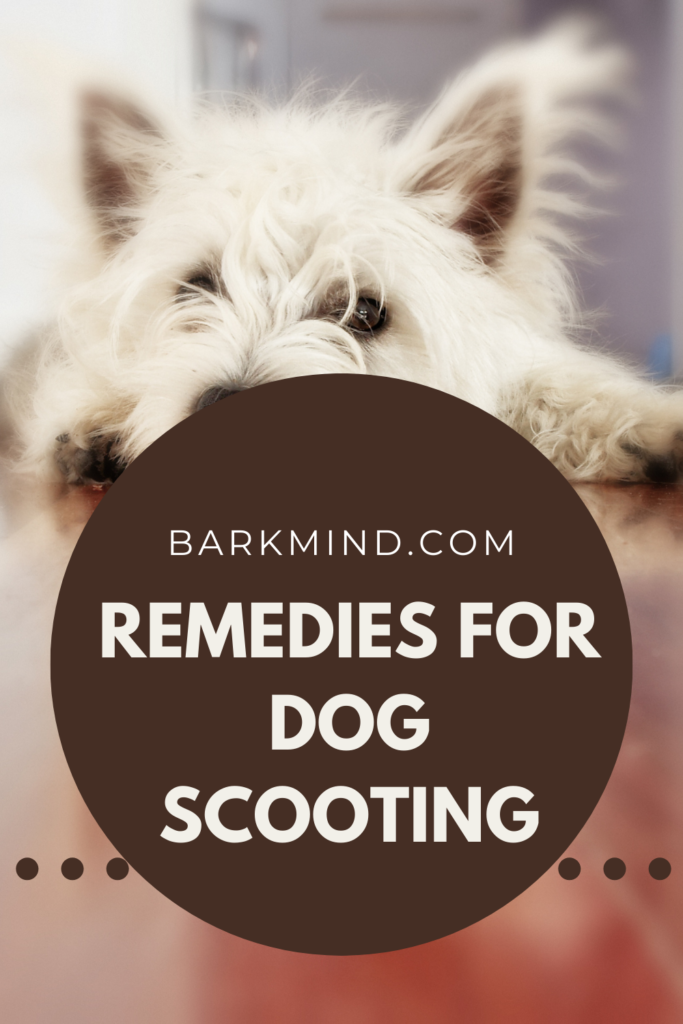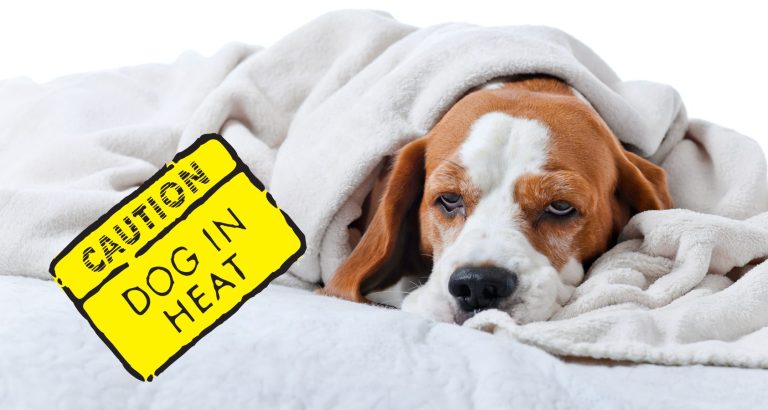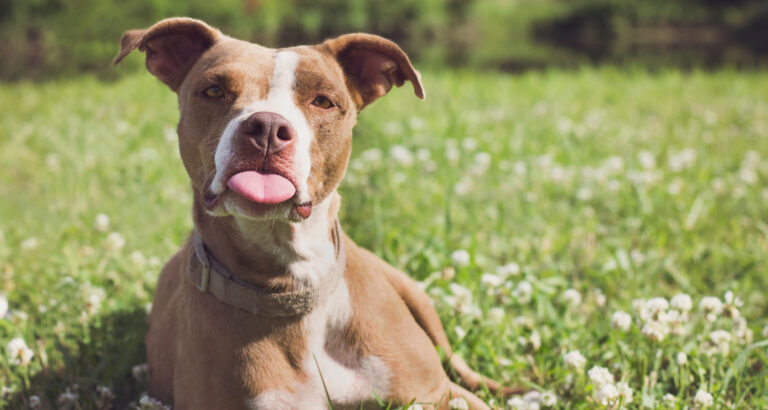Home Remedies for Dog Scooting: 10 Simple Solutions
Last updated on March 24th, 2023 at 09:11 pm
Reading Time: 9 minutesThis post may contain affiliate links. If you click and buy we may make a commission, at no additional charge to you.
Scooting No More: 10 Home Remedies For Your Dog’s Unwanted Scooting
Dog scooting, also known as scooting, refers to the movement that dogs make when they move their rear end while dragging their back legs on the ground behind them. Scooting can be an indication of anal sac impaction or an indication of severe constipation and should be evaluated by your veterinarian if you notice your dog scooting often. Fortunately, there are some simple home remedies that may work in the short term until you can get an appointment with your vet.
But, before we delve in, lets take a small look at what dog scooting is and means!
Quick Answer
Try cleaning your dog’s bum and changing his diet. However, check if there is any blockage stuck inside. It might be the reason as to why he’s scooting all around. The main thing is to be patient.
Let’s dive in!
What Does Dog Scooting Mean?
A scooting dog is typically a dog with an irritated rectum (bum). The irritation can be from hard stool, diarrhea, worms or irritable bowel syndrome (IBS). In general, you’ll know something is wrong if your pet suddenly begins to drag his rear end across surfaces rather than walking normally. This could also mean that he has a sore paw and is trying to avoid putting pressure on it.
If you notice your dog doing any of these things, it’s important to schedule an appointment with your veterinarian as soon as possible so that he/she can diagnose and treat your pet.
Does a Dog Scooting Mean Worms?
Not necessarily. One of the most common reasons why dogs scoot is due to an infestation of worms. In fact, your dog might scoot or drag his bottom on hard surfaces even if you don’t see any worms in his stool or around his butt. However, there are many, many other causes for dog scooting.
Worms and parasites are a more serious issue than the others. However, there is a chance that it’s not due to those.
What Causes Dog scooting?
Dog scooting is majorly caused by an intestinal parasite known as coccidia. Other, common causes for dog scooting includes worms and allergies. In some cases, it can also be a sign of bum pain or arthritis in your dog.
Note: Dog Scooting might be a sign that your dog has an illness so seek veterinary assistance as soon as possible.
In order to make sure that your dog doesn’t suffer from any other illnesses, take them to the vet for a regular check-up! And, if your dog is diagnosed with coccidiosis, treat it right away.
It’s important to get rid of this parasite (coccidiosis) as soon as possible because if the treatment is delayed, then there are small however chances that it will really affect your dog’s health and in severe cases, death is an option.
Are There Any Home Remedies For Dog Scooting?
There are several reasons that your dog may be scooting, but one thing is certain: it’s annoying and unsanitary. Some of them will require professional veterinary attention, but most can be treated at home with little fuss. The bottom line is that there’s no reason to leave your dog in pain just because he doesn’t understand what you want him to do. Using a combination of treatments and good hygiene practices can go a long way toward relieving his discomfort.
So yes, there are a couple of home remedies for dog scooting which you can try before taking your dog to the vet. But, before you think of the home remedies for your dog’s itchy bum, remember that your dog’s health is what’s important, not the cost of treatment. These remedies might help however a vets treatment might be the best option.

10 Home Remedies for Dog Scooting
If your dog has recently started scooting, don’t worry—this condition is quite common. In fact, it’s one of the most common reasons pet owners visit their veterinarian. While scooting may look painful, there are ways to help your pup deal with discomfort and get back to their normal life at home.
1. Dirty Dog
The first thing we recommend before taking any large measures is to try cleaning your dog’s bottom very well. This can be done by using an enzymatic cleaner or just good old soap and water. If you only have time to do one short thing, then this should be it!
2. Change up Diet
There are many possible reasons as to why you’re dog is scooting but a big reason is usually because of diet or allergy issues. Make sure your dog isn’t allergic to any ingredients in their food or treats that might cause them discomfort. Keep in mind that dogs with chronic problems of this kind are usually on low-quality foods. If your dog is scooting its might be a sign that what you’re feeding them isn’t working!
3. Apply Vaseline
‘’My dog has a sore bum, what can I put on it’’ it’s very common question that we get a lot. Using Vaseline (Petroleum Jelly ) might be a great remedy for scooting. Start off by buying a tub of petroleum jelly and applying it to your dog’s bum. Not only does this help soothe irritation, but it can also help with the “stickiness” from poop.
How Much Vaseline Should I Apply To My Dog?
| The general rule, is applying 1 tablespoon per 10 pounds your dog weighs.
Note: Make sure not to use too much Apple Petroleum Jelly. As it can cause more harm than good.
4. Use Oral Benadryl
Try using Oral Benadryl in order to get rid of any itching that your pet might have. Simply give them 1.3 milligrams per pound once a day. You can even crush up the pill into a powder form and mix it into some wet food if they are having any trouble swallowing it whole! But be aware that you need to monitor your dogs closely when doing this including watching how long it takes them to poop after taking this medicine since diarrhea is a side effect! Some dogs may not tolerate it well either, so be very careful when using this remedy.
5. Warm Cornmeal with Olive Oil
Try mixing some warm cornmeal and olive oil in a bowl and apply that mixture to the irritated area. This is meant to help with the itching and discomfort that your dog might be feeling. But don’t worry about using too much of this though since it’s all-natural! It’s supposed to harden after drying on the skin which will eventually flake off when they shed their coat.
Note: Too much isn’t a problem. As it is natural.
6. Use your finger to remove the blockage
Be careful when trying to help your dog by applying these treatments, especially if they have diarrhea.
Try making sure that their rear end is elevated so they won’t have to strain in order for the treatment to do its job. If you notice them straining at all then stop immediately since this can be harmful to their digestive system even more than what it already is. It’s important to be gentle and move in slowly. This procedure is rather unhygienic so use gloves at all costs.
7. Soften the Stool
There are many ways that you can soften up any stool that might have been dragging along on your pet’s skin by using some common household ingredients like vinegar or corn syrup. You could even try adding a little bit of canned pumpkin (not pumpkin pie filling) into their food if they will eat it. Some people say green beans work great for this method.
Stool Remedies:
- Fresh Water
- Milk
- Canned Pumpkin
- Fiber
- Vinegar
- Corn Syrup
8. Be Patient
Not all cases of dog scooting are solved overnight. In some cases, it might take a couple of months before you see any difference in your dog’s condition which means you need to make sure you are being very patient during this time!
If your pet starts having diarrhea from all the different treatments you’ve been trying, then stop them immediately and call a vet if necessary. Your vet can help you figure out what the root cause is and what type of treatment will be best suited for your dog. Of course, prevention is much better than the cure when it comes to health issues like this so take care of your dogs!
9. Increase Moisture in your dog’s diet
Well, number nine. Try Increasing moisture in your dog’s diet to solve scooting in dogs.
Proper hydration can be achieved by adding water to dry foods. About an extra 10 percent of the volume, when compared with dry weight, is good. After feeding you can add a little bit of olive oil on top of their food, this works like a charm! This will not only increase your pet’s overall health but will also help them feel better when if they are suffering from all that discomfort. Your dog counts on you for everything including their happiness and comfort.
10. Visit Your Vet
Well I know you were hoping for a remedy at home. But sometimes after trying everything. It’s best to go visit your vet. Not only will your vet be able to diagnose your pet and prescribe medication (which can help treat any underlying health issues), but he or she can also determine if there’s anything you can do at home in order to get your pup feeling better faster.
Ten Remedies
Well, that was our list of the top ten home remedies for dog scooting. Did you try one out? If yes let us know how it went. If his scooting persists after visiting a vet and trying these tips at home, however, don’t hesitate to make another appointment—your dog may have an infection that requires antibiotics!
How Do I get my Dog to Stop Scooting?
Getting rid of dog scooting requires a two-pronged approach. In addition to treating your pet’s health problem, you also need to work on changing his behavior. If you fail to address both issues, you risk your dog’s health worsening, and you won’t be successful in making him stop scooting. Here are some steps that can help you treat your dog’s medical condition and modify his behavior so he stops scooting. The good news is that most cases of dog scooting are relatively easy to diagnose and easy to fix. The bad news is that it can take time—in fact, several weeks or even months—to get results. But if you stick with it, there’s a good chance you will eventually succeed.
Your veterinarian may prescribe one or more medications to cure whatever health issue has caused your dog to start scooting. In many cases, simply addressing whatever underlying medical issue is causing him to itch and scratch will make him stop scooting altogether. Your vet may recommend non-steroidal anti-inflammatory drugs (NSAIDs) such as aspirin, ibuprofen (Advil), or ketoprofen (Orudis). NSAIDs are often prescribed when dogs have arthritis because they can reduce inflammation and pain without causing stomach ulcers like aspirin does in people.
What Can I Put On my Dogs Butt for Scooting?
If your dog’s scooting is caused by discomfort, there are a few things you can do to help. From special soaps and ointments to special collars and shampoos, these home remedies will help you stop that scooting in its tracks. It should also be noted that while some of these products may work great on your dog, they can cause irritation in other animals. Always test products on a small patch of skin before applying them to a larger area. If a product causes irritation or discomfort, discontinue use immediately.
Calendula compresses – Can help dogs that are scooting
Conclusion – Home Remedies For Dog Scooting
As you can see, home remedies can be a great way to prevent and possibly eliminate scooting. However, remember that if your dog continues to have problems with scooting even after trying these natural treatments, then it’s best to take them to your vet for proper diagnosis and treatment.
It’s important to take action as soon as possible. Reaching out to your vet after trying the remedies mentioned above is the best option. Your vet will need to perform special tests (allergy testing) and ask you some questions about what foods your pet eats. It’s also very important that you tell your vet about medications that your dog may be taking to avoid any adverse reactions.

About The Author
I'm a content writer and researcher. But bottom line, I loveee animals. I had my first animal which was a guinea pig at age 8. Later had a bunny, dog and a lot, a lot of fish. Writing about what I know about pets will allow me to share my knowledge and love for them with everyone else. Dealing with dogs my entire life, I know a lot.








